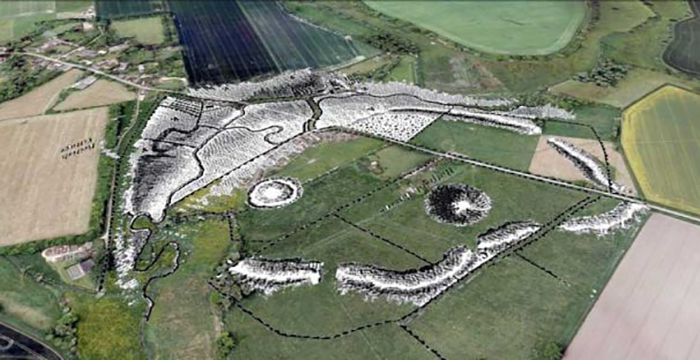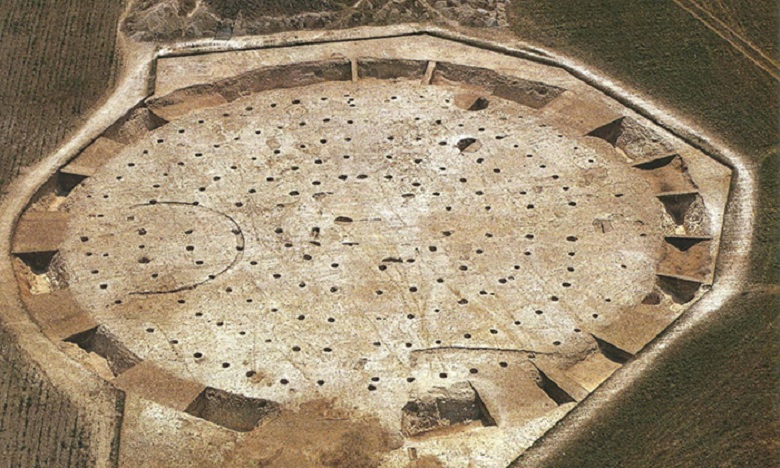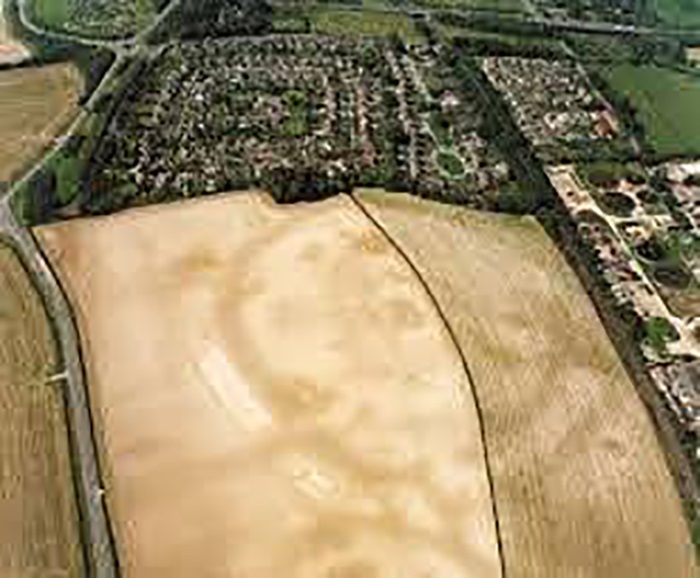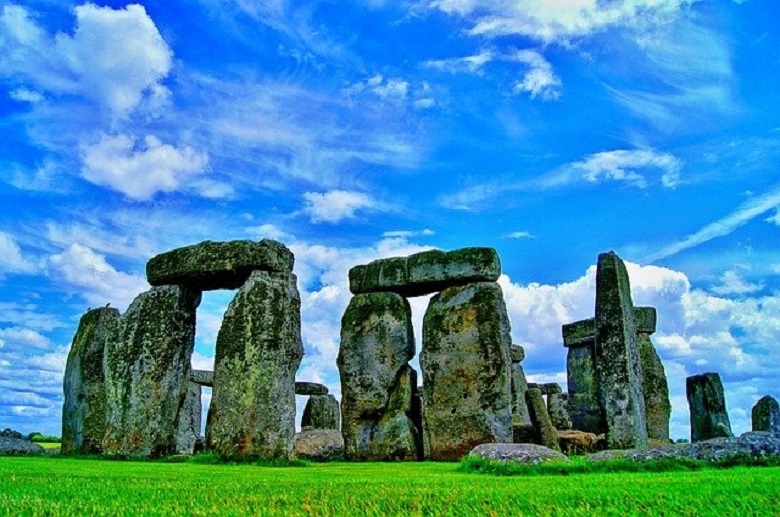Archaeologists discover a Stone Age metropolis that proved cavemen weren’t primitive

Many of us have been taught that the Stone Age is about hairy cavemen swinging wooden clubs and not burdened with special intelligence.
Many modern archaeological discoveries prove over and over again that this is not the case at all. Archaeologists discovered the ancient metropolis in Dorset. Mount Pleasant Mega-henge was built over four and a half thousand years ago. Contrary to popular belief, it was built not for several centuries but in wild haste. What caused the real construction boom of the Stone Age at the turn of the eras?
In fact, England’s numerous hills attest to the building skills of the Neolithic people. Around 2500 BC, shortly before the arrival of Europeans in Britain, there was even a major construction boom.

There are five mega henges in southern England, including a henge at the Mount Pleasant site near Dorchester, Dorset. It was built before Stonehenge and consisted of a large circle built of huge stones. There is a wooden structure in the center. Obviously, people were performing religious rituals there.
According to the latest information from historians, this ancient metropolis was built in a hurry. Its construction was completed in a couple of decades. It was not long before European intruders changed life in Britain forever.
The building is incredibly impressive in its scale. Mount Pleasant is the size of nine football pitches and is one of five metropolitan areas, including Darrington Walls and Avebury in Wiltshire.
Mount Pleasant was one of the five famous mega-henges in the south of England at the time. Others are Marden, Darrington Walls, Avebury, and Knowlton. They were all built around the same period. A wooden palisade of large tree trunks surrounded the city, capturing the coast and the protective moat around it. The size of the round concentric henge is enormous, almost six thousand square meters. Most interestingly, it was built entirely by humans using antlers as digging tools.

The Mount Pleasant Neolithic site was first excavated in the early 1970s. Researchers believe that this mega-henge was built in thirty-five years. Susan Greeney of the School of History, Archeology and Religion at Cardiff University commented: “Building Mount Pleasant would have required a huge number of people digging huge ditches with simple tools like pickaxes from horns. It was at the very end of the Stone Age, not long before people came from the continent with metal products, new types of ceramics, new styles of burial, and so on…”
Since dating objects in 1970 were nowhere near as effective, archaeologists conducted modern research using radiocarbon analysis. Experts have concluded that Mount Pleasant was probably built in the 26th century BC. This can be considered the last boom of the Stone Age. Then aliens arrived from the continent, bringing with them new technologies, cultures, and beliefs.
The locals saw the coming changes and decided to resist them. Perhaps they thought they didn’t need any change. The ancient British decided to build bigger and better monuments for their gods. They decided to give in, but stick to what they knew themselves.
Other metropolitan areas in the south of England include Marden Henge, the largest discovered to date. It is surrounded by a fence of tall tree trunks. Artifacts such as an early Bronze Age burial, arrowheads, and the remains of more than thirteen pigs have been found there. Apparently, they were cooked and eaten there. The burial, which is about four thousand years old, belonged to a teenager. Around the boy’s neck was an amber necklace.

According to a recent study, the modern British have little to do with the genius farmers of the Neolithic era who built the mega-henge 5,000 years ago. Instead, they are associated with a people who came from modern-day Holland and almost destroyed the creators of henge. According to archaeologist Barry Cunliffe, professor emeritus at Oxford University, the findings are “amazing.”
Many experts previously believed that only technology and culture were exported to Britain between 4400 and 4700 years ago, not the people themselves. But new evidence suggests that newcomers replaced 90 percent of the Neolithic peasants who built these unique monuments and lived here for 1,500 years. Dr. Mike Parker Pearson, co-author of the study and professor of British history at the University of London, said: “Most of us thought that the people who built Stonehenge were our direct ancestors, but in fact, this study shows that they are only distantly related to us if such a connection exists at all. Now we understand that these ancient people have completely disappeared.”

The new dating in the construction of Mount Pleasant helps to better understand that key period at the turn of the eras. As archaeological practices develop, the value of such structures and the importance of their long-term preservation should in no way be underestimated.




